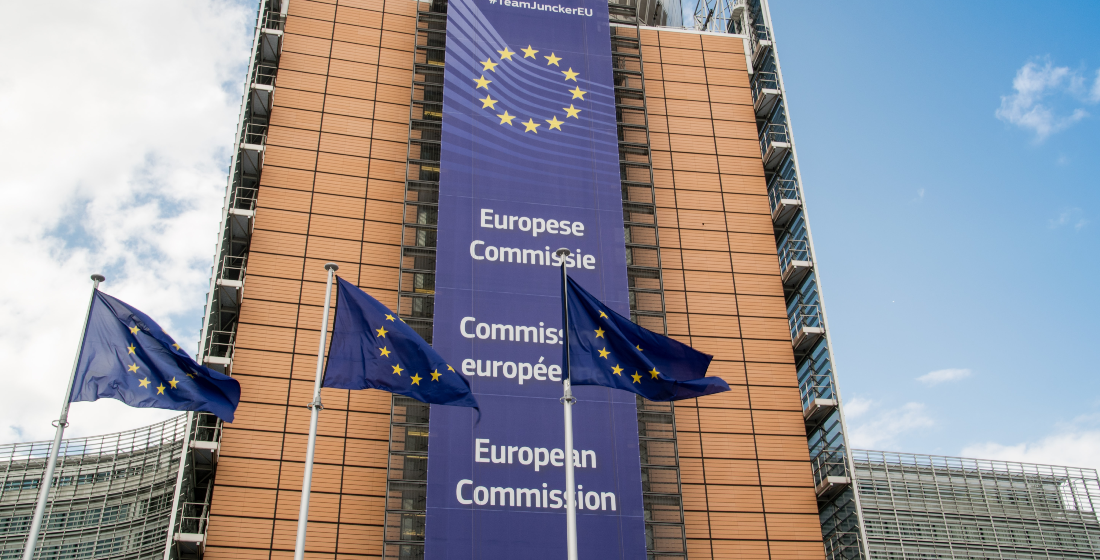EU gears up to become world’s largest green bond issuer
The European Commission has adopted a new framework aimed at reassuring investors of the environmental credentials of its upcoming €250bn green bonds programme.

The European Commission last month adopted a new green bond framework, clearing the way for the issuance of up to €250 billion of green bonds – comprising 30% of the Brussels’ NextGenerationEU pandemic recovery stimulus.
The EU hopes the framework will provide reassurance to investors that funds will be allocated to green projects, with the Commission tasked with reporting on its environmental impact. The Commission is now set to issue the first green bond later this month.
“The EU's intention to issue up to €250 billion in green bonds between now and the end of 2026 will make us the largest green bond issuer in the world,” said the Commissioner in charge of Budget and Administration, Johannes Hahn. “This is also an expression of our commitment to sustainability and places sustainable finance at the forefront of the EU's recovery effort.”
ICMA and beyond
The new NextGenerationEU green bond framework has been drafted in line with the green bond principles of the International Capital Market Association (ICMA) – a market standard for green bonds. The framework was reviewed by a second party opinion provider, Vigeo Eiris, part of Moody's ESG Solutions, which deemed the framework to be aligned with the ICMA's Green Bond Principles and coherent with the EU's wider Environmental, Social and Governance (ESG) strategy.
The framework has been closely aligned with the European Green Bond Standard, a proposal tabled by the Commission in July and awaiting approval from the European Parliament and Council. The alignment is reflected, for example, in the fact that a portion of the eligible investments under the Recovery and Resilience Facility (RRF) – the centrepiece funding instrument of NextGenerationEU – have integrated the technical screening criteria of the EU Taxonomy, a classification system established to clarify which investments are environmentally sustainable.
“The ICMA green bond principles provide an outline for how issuers should structure their green bond frameworks and which information should be provided to investors; however, the standard doesn’t include detailed definitions to determine what projects count as truly green,” a Commission spokesperson tells Uxolo. “While the European Green Bond Standard is based on market best practices, it also goes further in certain key aspects, including by requiring full alignment of funded projects with the EU Taxonomy, and by establishing a regime for the registration and supervision of external reviewers.”
Green bonds for green purposes
The new framework is aimed at proving to the investor community that the funds raised by the NextGenerationEU green bonds will be used for verifiably green objectives. The bond proceeds will also finance the share of climate-related spending laid out in the RRF, with every EU country obliged to dedicate at least 37% of their national Recovery and Resilience Plan – the roadmap to spending the funds under the RRF – to climate-relevant investments and reforms.
Under the RRF rules, EU nations will report their green spending to the Commission, which will then use that information to demonstrate to investors how the green bonds proceeds have been used to finance the green transition. The reporting will be organised around nine categories, with clean energy, energy efficiency and clean transportation taking the largest share.
The framework will report on both allocation and impact. The Commission will use countries’ data on green-projects spending to determine allocation, and leverage its own internal expertise to gauge the impact of the investments; which will be independently verified by external auditors and advisers.
“Negotiations [over the European Green Bond Standard] are currently ongoing with the EU member states in the Council and in the European Parliament. Once those have reached a conclusion and the proposal is formally adopted by the EU, the standard will become available for market participants to make use of,” says the spokesperson. “The intention of the Commission is that the European Green Bond Standard can be used by both EU and non-EU entities, on a voluntary basis.”
An €800bn stimulus
Approved in July last year, NextGenerationEU is a temporary economic stimulus instrument of some €800 billion aimed at supporting Europe's recovery from the coronavirus pandemic. To finance the programme, the Commission – on behalf of the EU – aims to raise up to €800 billion from the capital markets between now and the end 2026. Of that amount, €421.5 billion will be made available for grants (under RRF and other EU budget programmes) and €385.2 billion for loans. This will translate into borrowing volumes of an average of roughly €150 billion a year.
In September 2020, the European Commission announced its intention to raise 30% of the NextGenerationEU funds through the issuance of green bonds and use the proceeds to finance green investments and reforms. And following last month’s adoption of the green bonds framework, the launch of NextGenerationEU green bonds is imminent, with the first issuance already planned for late in October via syndication. The Commission also announced it had reviewed its plan for funding the recovery in 2021 and confirmed its intention to issue €80 billion of long-term bonds this year, to be topped up by tens of billions of euros of short-term EU-Bills. According to its issuance calendar, the Commission will be holding roughly one auction and one syndication per month for the bonds.
“The green bond market is growing fast and the potential for further growth comes with challenges, such as identifying what economic activities are truly green. This is why the EU needs dedicated tools to guide investors and finance towards high-quality green investments as ensured under the European Green Bond Standard,” says the Commission spokesperson. “The EU Green Bond Standard is intended as a gold standard, to set the benchmark against which others standards can be compared, and potentially align with.”





